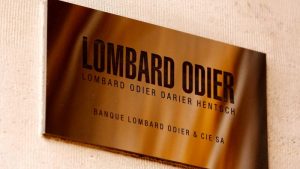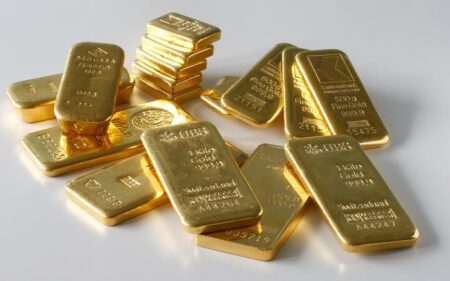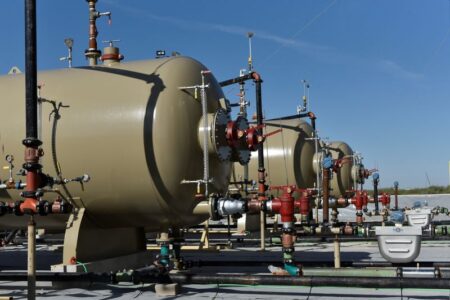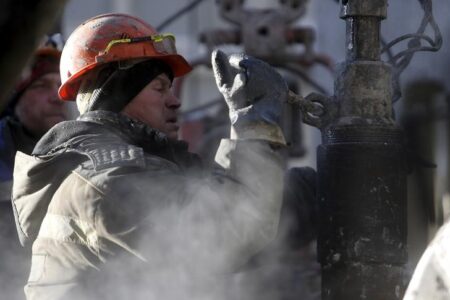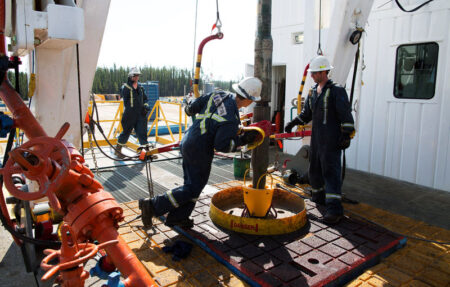By Siyi Liu and Dominique Patton
YICHUN, China (Reuters) – Down a steep dirt road from the Baishi Huashan lithium mine in southern China, trucks laden with silvery grey ore rumble towards a cluster of smelters in the valley below that have sprung up to cash in on the electric vehicle battery boom.
The city of Yichun, China’s most prospective region for lithium, is ground zero in the country’s push to cut its reliance on imports of the metal for its battery industry, which makes three-quarters of the world’s lithium-ion batteries.
Mining the metal from a rock called lepidolite, Yichun aims to quadruple its output to about 350,000 metric tons of lithium carbonate equivalent (LCE) by 2025, or as much as the world’s top exporter Australia produced last year.
However, with much higher production costs than other Chinese mining regions, Yichun is the most vulnerable to the recent global fall in lithium prices, raising questions about how it will meet its target.
At the same time, concern is growing about the environmental impact of extracting lithium ore from lepidolite, which has already led Yichun authorities to shut some plants, further challenging the country’s drive for self-reliance.
Monthly output in Yichun has fallen by about a third after China moved to rein in a chaotic rush into the sector, while Beijing also slashed EV subsidies, which hit lithium demand and hammered prices.
“Many investments in Yichun are now at risk after prices fell this year,” said Yang Yaohua, an analyst at Guosen Futures.
With global lithium demand forecast to grow 76% to 1.57 million metric tons LCE between 2022 and 2025, according to Australian bank Macquarie, and China dependent on imports for 55% of its lithium, Beijing wants to boost domestic output.
Yichun, a city of 5 million people surrounded by forest-covered mountains rich with lepidolite, is leading that push.
By the end of last year, 202 companies, including battery giants CATL and Gotion High Tech, had invested in the city’s smelters and mines, according to Yichun’s website.
COST CHALLENGE
For battery materials makers, Yichun’s location is its main attraction. Its mines are more accessible than the brine lakes on China’s western plateaus and the spodumene rock in southwestern Sichuan province.
To draw investment, the city has rolled out a raft of sweeteners in recent years, targeting 500,000 metric tons a year of lithium carbonate production from lepidolite and other sources.
It has supported mine development by taking stakes in mining companies to help battery materials makers that do not have mines overseas like those owned by China’s top lithium producers Ganfeng Lithium and Tianqi Lithium.
By comparison, development in other lithium-rich regions is far behind.
“There are very few battery precursor makers in Qinghai, and the brine lake production in Qinghai and Tibet plateau areas can be very limited during extremely cold winter weather,” said Arena Yang, a Shanghai-based battery metals analyst at CRU.
However, Yichun faces a big cost disadvantage. Separating lithium from lepidolite can cost as much as 100,000 yuan per metric ton, compared to 40,000-50,000 yuan for brine and 50,000-60,000 yuan for spodumene, analysts said.
The cost difference was manageable until lithium prices plunged after Beijing cut EV subsidies this year.
“The higher costs are concerning, especially if lithium prices remain on a downtrend,” said Yang, the Guosen analyst.
He sees lithium prices falling to 100,000 yuan as soon as next year from 320,000 yuan currently because of a looming global surplus.
‘NATURAL RESOURCES CHAOS’
Further dimming the outlook for lepidolite, environmental damage is a growing concern.
Along the road to the Baishi mine, red banners implore: “Unite to crack down on natural resources chaos”.
Lepidolite extraction and smelting produces toxic by-products like thallium and tantalum that cause severe water pollution, said Wu Wei, an assistant professor at Xiamen University.
Yichun authorities have already found toxic substances in the Jin River, according to media reports.
Eric Norris, president of Energy Storage at the world’s top lithium miner Albemarle (NYSE:) Corp, said miners in the U.S. would never be allowed to do the kind of processing seen in China for lepidolite.
“It comes at a huge environmental cost,” Norris told Reuters in an interview.
In December, Yongxing Special Materials Technology said production at a subsidiary’s plant in Yichun was suspended for 10 days while authorities investigated abnormal water quality found in the Jin River.
Around the same time, Chinese media outlet The Paper said Yongxing’s plant was among four Yichun factories that suspended output after high levels of thallium were found in water samples from the river, a main source of water supply in the area.
Reuters has not independently confirmed the pollution incidents. Yongxing did not respond to emailed questions. Yichun government’s news department did not answer several calls. Jiangxi provincial government’s news department did not respond to a request for comment.
By 2025, if Yichun reached its target of 500,000 metric tons a year of lithium carbonate output, it would produce about 10 million tons of tailings, said Lv Jun, director of Yichun’s lithium battery new energy industry development centre.
That would be more than ten times the current tailings handling capacity in Yichun, said Ma Jun, director at the Institute of Public & Environmental Affairs (IPE), a non-profit organisation in Beijing, citing public information.
“Previously, local environmental supervision was not strict. As it gets stricter now, lithium resources in Yichun will lose their competitiveness with the higher costs for environmental protection,” Ma said.
For now, many companies are forging ahead, while seeking better control over costs, said Vicky Zhao, senior analyst at Fastmarkets. But questions linger over Yichun’s ambitions.
UBS analysts see China’s supply of lithium from lepidolite tripling to 280,000 metric tons, or 13% of global supply, between 2022 and 2025, well short of Yichun’s target.
“Unless lepidolite producers find a way to solve the environment and costs issues via technology innovation and industry upgrade, it will remain a second choice to spodumene,” said Li Qi, an analyst at British consultancy Benchmark Mineral Intelligence.
($1 = 7.1418 renminbi)
Read the full article here

